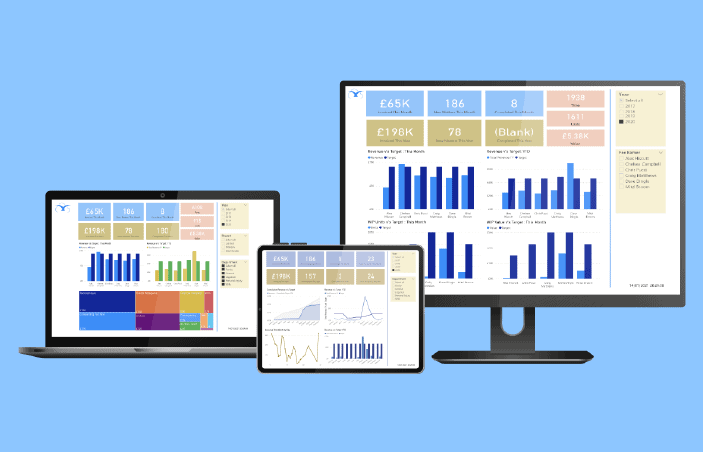Contents
How to achieve a return on your legal software investment

An unlikely source of inspiration for improving efficiencies and overall performance for you firm can be found in the British Cycling team. With their success routed in continuous optimisation and a focus on improving every aspect of their team by just 1%, the team became champions.

The cumulative effect: British Cycling
Until early 2000, the British Cycling team had only won one gold medal in over 100 years. With the dedicated work of Dave Brailsford, who took over as the Performance Director of British cycling in 2003, the team went on to dominate world cycling from 2008 – breaking Olympic and world records.
Brailsford’s strategy was to focus on the 1% marginal gains rule. He believed that “if you break down every little aspect of cycling and improve each by 1%, the final result would be significantly different.” And the results spoke for themselves. In 2008, British cycling won eight gold medals and in the following 2012 Olympics, when no other country could achieve more than one gold medal, British cycling won eight again.
The secret to his success was continuing to look for incremental gains, even if the results of performance were yet to be realised. It took a few years for the performance gains to be visible, but all the while Brailsford continued to look for additional gains in every aspect of team. From the best handlebar grips to the best recovery massage gels and food ingredients, Brailsford left no stone unturned when looking to optimise performance.
Often people tend to focus on big changes for large gains and ignore the small amendments that produce impactful results over time. However, the marginal gain method should be viewed as a marathon and not a sprint. As Brailsford said: “Forget about perfection; focus on progression and compound the improvement. They’re tiny things but if you clump them together, they make a big difference.”
The cumulative effect: Law Firms
What if we applied the same techniques to the practice of law? By simply improving your firm’s case management, document production, time recording, accounting, and client journey processes by just 1%, the results could be phenomenal.
Imagine what those incremental changes could do to your efficiencies, staff satisfaction, client experience and above all, profitability. Implementing 1% improvements across your firm is made easy with the right technology. Practice and case management software solutions are designed to help you automate time-consuming processes that allow you to streamline your firm.
However, by simply installing the software into your firm, you’re unlikely to reap the rewards and see a return. Investing in practice management software needs to involve the review and optimisation of existing processes to fully utilise the technology to gain a return.
By only digitising existing, already inefficient, processes, without taking the time to review and improve on them, it will only enable you to make marginal, stagnant improvements. Digital transformation is not only about digitalising data and processes but looking to optimise your operations to maximise the technology you have on offer. This can sometimes require a change or mindset shift in the way things have always been done.
It’s important that technology helps a firm achieve it’s goals and drive efficiencies to save cost. But often, firms are disappointed in the returns they achieve because they don’t look to continuously make those 1% improvements, or implement the software’s full capabilities across every area of their firm. Without fully utilising the power of their software solution, firms can never begin to achieve the value that the system has to offer.
We want to make sure your existing, new or next software solution works hard for you and helps you deliver on your targets and achieve your goals. We’ve put together our advice and guidance on how to achieve a return on your legal investment.
Case management: an investment not a cost
Firstly, it’s important to highlight the value of practice and case management solutions (PCMS) to a business and understand the benefits that it can bring to a firm.
Software and technology infrastructure is typically seen as a cost to most law firms. Like other functional, necessary bills for a business, it’s seen as an additional spend in revenue. But a PCMS is an investment, not a cost. It returns financial benefits to a firm and helps drive a business to the next level – enabling scalability, employability, and profitability.
Just like a valued fee earner at your firm, a PCMS provides the opportunity to save costs, increase revenue and win new business.
Small changes make big impacts
Implementing technology primarily feels like a large investment in both time and money. But the long-term effect to performance returns a much greater value to your firm that the initial costs.
The beauty of implementing practice management software solutions is that it affects every area of your firm.
All areas of your practice – from the accounts department, secretaries and fee earners to clients and mangers -will see improvements to performance and benefit from the software.
A PCMS helps increase efficiencies in document production, client communication, billing, invoicing, time recording, third-party collaboration and much more. It’s those small but impactful changes in your process that will strengthen your firm to ensure you’re operating at maximum effectiveness.
Continuous improvement methodologies
The three well known continuous improvement methodologies include Kaizen, Lean and Six Sigma. They look at the compound effects of small incremental improvements over time. All three methodologies have their own individual merits that can used individually, or together, to help you implement a strategy for driving long term efficiencies.
Practice management software is your digital toolset that will help you carry out these changes. Implementing these continuous improvements strategies will help you to achieve maximum return on your technology investment.
Kaizen
Kaizen, in Japanese, means ‘change for the better’ and is a cultural mindset change rather than a process. The core principle is that improvement is everyone’s responsibility and addressing and making those improvements as a team has greater impact.
Kaizen is the belief that everything can be more efficient. The mindset looks to cut business waste through reducing unnecessary activities to increase efficiency and quality.
The Kaizen mindset is crucial when looking to see real value from your software investment. Without taking action to reduce inefficiencies across the firm as team, it’s going to be impossible to implement valuable change. Technology investment needs complete buy-in from partners through to administrators for the accumulative effects to make the impact. Ensure your team is onboard with your firm’s goals, implementation plan and training to effectively manage the change and reap the rewards from your software.
Lean
The lean methodology focuses solely on waste: identifying wasteful activities, highlighting the effects of those activities on business efficiency, and eliminating or reducing those activities.
Lean focuses on wasteful activities that don’t add value to the client. Therefore, identifying processes that slows case progression for clients, reduces productivity for staff, or reduces accuracy and accessibility of data for clients and staff, is a top priority for law firms.
PCMS are designed to automate tasks, speed up processes and reduce administrative waste, so once those problem areas are identified within a firm, with the right tools, you’ll have access to functionality to streamline your operations to benefit you client.
Six Sigma
Six Sigma focuses on managed processes for a quality output. The methodology looks at defining a controlled process and strategy and then continually measuring and redefining for the best outcome. It’s a problem-solving technique that aims to minimise variance to achieve a better quality outcome and an optimised operation.
For law firms, the focus would be to improve consistency and accuracy. With a centralised, digital database of data and files, you can begin to create a standardised way of working. Every team member requires access to the same, up to date information on clients and matters to improve the accuracy of communications, billing, and reporting. The centralised database can then automate the production of documents, improving compliance and brand reputation. And when all this information is accessible to those that need it, from anywhere at any time, you can benefit from the accumulative savings in time and money.
The results for your law firm
Implementing a combination of these continuous improvement strategies and mindsets and applying it to optimise the use of your legal software solution, will help you achieve a return on your investment.
For example, through the effective use of your software’s time-saving automations and productivity enhancing features, you could save a fee earner at least one hour a day. At an average hourly rate of £250 and 200 working days a year that’s a saving of £50,000. The annual licence cost of a quality case management solution is £1,200 (12 months x £100 per month) providing a return on investment of £48,800.00 per year, per fee earner.
This highlights the dramatic compound effect of incremental changes. When implemented across all processes and departments, the effect on your firm could be dramatic; and you could soon be outperforming your competition and winning gold like the British cycling team in 2008.
Small changes that have a big impact
The changes to your processes alone are helpful but not ground-breaking in isolation. For example, the 10 minutes saved from not manually drafting a next steps letter, but instead generating it from a click of button in a legal workflow, isn’t going to boost profits. But when combined across all the next steps letters created over the year, for all fee earners, that’s a big saving.
Here are just five, of many slight changes that have big impacts on your firm’s ability to drive long-term efficiencies.
Digitalising signatures
By using integrated solutions like DocuSign, you not only benefit from the cumulative savings of posting and printing costs but also the time saving benefits of receiving up to 83% of your files signed in less than a day as opposed to waiting for clients to receive, sign and send back contracts.
Standardised document templates
Automating the creation of documents and letters will save hours of administrative time. It’ll also ensure consistency and improve accuracy to reduce risk and improve reputation. Your clients will experience a more effective service, helping to progress cases quicker. And it enables fee earners to delegate standard document creation tasks to junior lawyers or administration staff to free up fee earner time to drive income for the firm.
Integrated time recording
Reduce the manual task of recording time by automating the process and linking it to billing within your software. You’ll save time, improve billable accuracy, and reduce errors for the accounts department.
Automated client communications
Building communication templates, which are sent via email or SMS text, and integrating them into your automated workflows helps you provide instant updates to clients. Clients appreciate a transparent and responsive service and keeping them up to date on next steps, deadlines and updates is key for the delivery of a quality client service. Crucially it’ll eliminate the hours of manual chases and setting reminders in the diary for smooth and efficient case management.
Digital data capture
Chasing clients or relying on them to visit you at your office are inefficiencies in your case management process that your fee earners do not need. Implementing a client portal and digital questionnaires to capture data, files and signatures removes unnecessary admin chases and reduces workload to maximise.
How to achieve a return on your legal software investment
Consider your firm’s future goals
To maximise the return on your investment you should implement a future-proofed solution. This extends the shelf-life of the PCMS and therefore improves the lifetime value. Consider your current challenges as well as your goals for the next five years. Find out more information on investing in a future-proofed solution in our blog that details the three keys areas you must consider.
Team buy-in
As mentioned earlier, the success of continuous improvements is teamwork and the same applies for the success of a legal software solution. All members of the firm need to understand the benefits of change and be willing to implement the new processes to help towards the overall performance improvements across the firm. When 1% is proven to have such a significant impact, leaving just one person in your firm working in a traditional way will impact your return.
Successful implementation
Implementing a new software solution is a great opportunity to evaluate existing operations and to define a plan and strategy for change. Noting the principles of Six Sigma and Lean methodologies, you’ll gain from identifying existing inefficiencies, reviewing data from your current processes, and defining a strategy that optimises your case management solution to reduce waste for your business.
Training
Your software is only as good as the people using it. Setting aside time for software training is important at the implementation stage of your project. Without staff feeling confident in the new system, they’ll choose to revert to the old ways of working. Without a firm-wide buy-in, you’ll not maximise the value of your software.
Training is not only important at the outset but should be reviewed and updated continuously. Technology changes, new functionality is added, and internal processes change, which mean you could benefit from more effective ways of using the software as your firm grows.
Continuous improvements
We circle back to the 1% improvement theory. As time passes and you become familiar with your new software processes, the return on investment stagnates. The hours a day you saved initially becomes the normal way of working and so the software can begin to be viewed as a cost.
Technology changes quickly and so software systems are updated with additional features and functionality that can further enhance your firm. With a continuous review of internal processes, commitment to ongoing training and learning about new features, you will continue to see a return on your investment.




